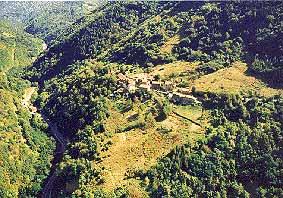


All the structures

Pistoia lies 67 m. above sea level at the north-western edge of the plain of Florence, near the initial ramifications of the Apennines, approximately 35 km. from the regional capital.
Originally a Roman centre (Pistoria), under the Lombards it became a defensive stronghold and seat of `castaldia'. After a period of rule by bishops, it became a free municipality with a Statute dating back to 1177, one of the oldest in Italy. The 13th century was its period of major prosperity, though this was hindered by constant battles with Florence. In 1306 Pistoia was conquered by the latter and this was the start of its decline. It lost all autonomy and formed part of the Florentine possessions in 1530. It then shared the fortunes of the Grand Duchy until 1859, when it was united with the Kingdom of Italy.
Monuments: Duomo (12th-13th century, housing terracottas by A. Della Robbia and silver reredos by S. Jacopo, one of the major works of art by Italian silversmiths) with Baptistry (14th century, Gothic) and bell-tower (13th century); Palazzo Pretorio (14th century), Palazzo del Comune (13th-14th century).
The economy of Pistoia is based both on an active commercial sector, especially the dynamic fruit and vegetable market, and on a varied industrial sector including engineering, textile, furniture, food, footwear, mechanical and plastics factories.
Famous People: Benedetto Colucci (humanist, 1438-1515), Enrico Betti (mathematician, 1823-1892), Policarpo Petrocchi (philologist, 1852-1902), Ventura Vitoni (architect, 1442-1522).
Cultural Institutions: State Archives, libraries, Capitulary Museum, Civic Museum (paintings of the Tuscan School of 13th-16th centuries). Diocesan Museum, Turati Foundation.
In the Province: Montecatini Terme (spa), Monsummano (spa), Abetone (winter ski resort), Pescia (floriculture), Cutigliano (winter sports), San Marcello Pistoiese (Museo Ferrucciano), Torre del Lago Puccini (Museum of Puccini); Collodi (Pinocchio monumental park).